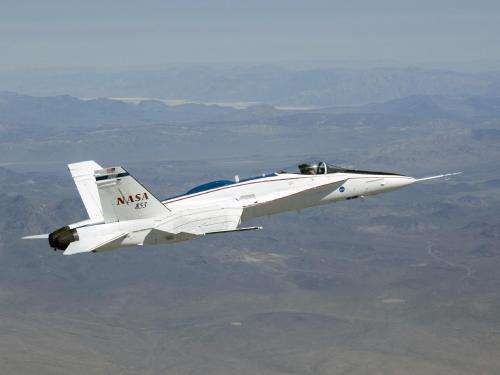Intelligent control for performance: Reducing drag, saving fuel

(Phys.org)—NASA Dryden's versatile F/A-18 Full Scale Advanced Systems Testbed (FAST) aircraft recently completed a series of flights that explored reducing fuel consumption during cruise flight conditions by making small modifications to existing control laws and mechanisms in the aircraft's flight control computer.
As part of the Intelligent Control for Performance (ICP) research project, a special computer code called a peak-seeking algorithm was programmed into the aircraft's Airborne Research Test System computer. This code enables the computer to precisely adjust flight control surface deflections in order to reduce aerodynamic drag.
Large jetliners and cargo aircraft consume most of their fuel during the cruise portion of flight, so optimizing fuel consumption would reduce costs and pollution. For NASA, developing new control system methods like this helps meet the agency's Environmentally Responsible Aviation (ERA) project goals of reduced fuel burn and emissions.
Preliminary ICP flight results indicate that a three- to five-percent reduction in fuel burn was achieved compared to the baseline trim state at two flight conditions. The ICP technique shows much promise for reducing fuel burn in transport aircraft in the future.
For another experiment planned to fly next summer on the FAST F/A-18, a novel "thin film" sensor manufactured by TAO Systems, Inc., is currently being applied to one of the aircraft's wing surfaces. This technology will allow real-time characterization of the airflow over the wing. This sensor capability could lead to considerable weight reduction, fuel savings, and flight safety enhancement in future aircraft designs by revealing the actual flight loads on an aircraft to help ensure that design loads are not exceeded.
Another use for this technology could be to reduce the effects of gusts and turbulence on an aircraft when coupled with appropriate flight control algorithms.
Provided by NASA



















